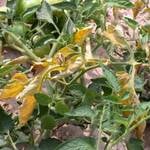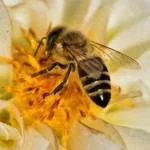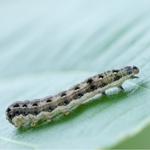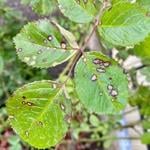
How to Grow Tomatillo Seeds
Grow Guide #2330
Family: Solanaceae
Binomial name: Physalis spp.
Life Cycle: Annual
This 'How to Grow' guide details everything a home gardener needs to know to plant, grow and care for Tomatillos (Physalis spp.).
When to Sow Tomatillo Seeds
Tomatillo is a warm season crop. Use the table below to identify the best time of year to sow tomatillo seeds in your climate.
| JAN | FEB | MAR | APR | MAY | JUN | JUL | AUG | SEP | OCT | NOV | DEC | |
|---|---|---|---|---|---|---|---|---|---|---|---|---|
| Cool | ||||||||||||
| Temperate | ||||||||||||
| Sub-Tropical | ||||||||||||
| Tropical | ||||||||||||
| Arid |
Preparation
Tomatillo plants are best grown in full sun. Choose a location that will receive at least 6 hours of full sun each day.
Tomatillo plants need a well drained soil enriched with plenty of organic matter. Prepare soil by weeding it thoroughly, digging it over to loosen it and adding aged animal manure or compost. Keep the area free of weeds until planting. Learn more about preparing soil for planting here.
Tomatillo plants can be grown in containers. If possible choose a variety that’s recommended for container growing. Use a good quality potting mix and make sure your container is large enough for mature plants; a minimum of 40 litres is recommended for tomatillos. During the growing season, keep in mind that container grown plants may need additional fertiliser to encourage healthy growth.
How to Sow Tomatillo Seeds
Tomatillo seeds do not require any treatment (eg soaking, stratification) before sowing.
Tomatillo seeds grow best when they are raised in trays or other containers and transplanted to the garden once established.
- Fill trays, punnets or jiffy pots with a good quality seed-raising mix, or use soil starter pellets.
- Sow seeds 4mm deep.
- Keep soil moist but never wet or dry.
- Seeds should germinate in around 15-20 days at a soil temperature of 21-28°C.
- Transplant seedlings to the garden once they have their first true leaves and are large enough to handle (usually 5-10cm tall).
- Plant out, spacing plants 50cm apart.
Tomatillo is a tender crop that’s sensitive to frost. Do not transplant seedlings or sow seeds outside until all danger of frost has passed.
Optional: In cool climates tomatillo seeds can be sown indoors 6 weeks before the last expected frost. Grow them in a warm position with plenty of natural light.
How to Grow Tomatillo
Tomatillo plants may need watering during the growing season. Water when the soil is dry about 5cm below the surface (test this by scratching away a little soil with your finger). Water deeply in the early morning or late afternoon. Avoid watering the leaves of plants to avoid fungal diseases. Learn more about watering here.
If soil was well prepared no extra fertiliser should be necessary. In poor soil or to give your plants an extra boost, application of a balanced fertiliser or one formulated for fruit and vegetables can be beneficial:
- Apply slow release fertiliser at the recommended rate when transplanting or when seedlings are 5-10cm tall.
- Apply liquid fertiliser at the recommended rate and frequency while plants are fruiting or flowering.
Tomatillo plants need to be staked for support. Use a sturdy stake or grow plants alongside a trellis or tripod. As plants grow, tie stems gently to the support using twine or plant ties. Make sure you have the support in place when you sow seed or transplant seedlings to avoid disturbing the plant’s roots later.
Tip: Tomatillos are poor self pollinators. They will produce a better crop if several plants are grown together.
How to Harvest Tomatillos
Tomatillos should be ready to harvest in approximately 70-90 days.
Fruit is ready when the papery husk around the fruit dries and begins to split. Harvest fruit by cutting with snips/secateurs or by twisting to separate it from the stem. Pull back the husk and separate it from the fruit. Harvest regularly to encourage more fruit. For short term storage, harvested fruit can be kept in its husk in a paper bag in the fridge. For long term storage fruit can be frozen or canned.
Common Problems when Growing Tomatillos
Like all plants, tomatillo is susceptible to some pests, diseases and other problems. Below is a list of the most common problems gardeners encounter when growing tomatillo plants:
 Aphids are small (2-4mm long) sap-sucking insects that congregate on the new shoots or the undersides of leaves. They can cause leaves to wilt or become discoloured, and also excrete honeydew which can attract ants and other insect pests. To manage aphids, remove them by spraying with a garden hose, apply a soap or alcohol spray, or encourage predatory insects to your garden. Read more about aphids here.
Aphids are small (2-4mm long) sap-sucking insects that congregate on the new shoots or the undersides of leaves. They can cause leaves to wilt or become discoloured, and also excrete honeydew which can attract ants and other insect pests. To manage aphids, remove them by spraying with a garden hose, apply a soap or alcohol spray, or encourage predatory insects to your garden. Read more about aphids here. Queensland Fruit Fly (Bactrocera tryoni) that lays its eggs in fruit, causing it to rot from the inside. Fruit will fall prematurely and larvae can be seen if affected fruit is cut open. Practice good garden hygiene by disposing of fallen fruit, protect fruit with insect exclusion netting and install traps to monitor fruit fly populations. Read more about Queensland fruit fly here.
Queensland Fruit Fly (Bactrocera tryoni) that lays its eggs in fruit, causing it to rot from the inside. Fruit will fall prematurely and larvae can be seen if affected fruit is cut open. Practice good garden hygiene by disposing of fallen fruit, protect fruit with insect exclusion netting and install traps to monitor fruit fly populations. Read more about Queensland fruit fly here. Whitefly is a sap-sucking insect related to aphids. They are often found in large numbers on the underside of leaves and will swarm in clouds when disturbed. Plants may have yellowing leaves or may wilt, and growth will be slowed. Whitefly can be removed with a garden hose or sprayed with soap spray. Badly affected plants should be destroyed. Attracting beneficial insects that will prey on whitefly can be beneficial. Read more about managing whitefly here.
Whitefly is a sap-sucking insect related to aphids. They are often found in large numbers on the underside of leaves and will swarm in clouds when disturbed. Plants may have yellowing leaves or may wilt, and growth will be slowed. Whitefly can be removed with a garden hose or sprayed with soap spray. Badly affected plants should be destroyed. Attracting beneficial insects that will prey on whitefly can be beneficial. Read more about managing whitefly here. Blossom end rot is a nutrient deficiency caused by a lack of calcium uptake, often due to inconsistent watering. Fruit will discolour from the bottom end upwards, with the affected area growing darker and harder. Dispose of affected fruit, water regularly and evenly, and correct soil pH and nutrients if required. Read more about blossom end rot here.
Blossom end rot is a nutrient deficiency caused by a lack of calcium uptake, often due to inconsistent watering. Fruit will discolour from the bottom end upwards, with the affected area growing darker and harder. Dispose of affected fruit, water regularly and evenly, and correct soil pH and nutrients if required. Read more about blossom end rot here. Possums, birds and other animals can ruin a large percentage of your harvest overnight. Physically exclude pests by using netting or cages, or try spraying plants with a pungent homemade spray made from garlic, fish oil or mustard.
Possums, birds and other animals can ruin a large percentage of your harvest overnight. Physically exclude pests by using netting or cages, or try spraying plants with a pungent homemade spray made from garlic, fish oil or mustard. Fusarium wilt and verticillium wilt are diseases caused by soil-borne fungi. The fungi enter a plants’ roots and prevent water and nutrients from moving through plants. Leaves and branches will wilt, dry off and die and leaves may yellow. There is no cure for wilt but choosing resistant varieties, disposing of affected plants and soil, practicing good garden hygiene and crop rotation will all help to prevent it spreading.
Fusarium wilt and verticillium wilt are diseases caused by soil-borne fungi. The fungi enter a plants’ roots and prevent water and nutrients from moving through plants. Leaves and branches will wilt, dry off and die and leaves may yellow. There is no cure for wilt but choosing resistant varieties, disposing of affected plants and soil, practicing good garden hygiene and crop rotation will all help to prevent it spreading. No fruit can be a result of high temperatures, too much wind or lack of cross-pollination. Grow plants in a position protected from wind and grow several plants together so that insects can pollinate the flowers
No fruit can be a result of high temperatures, too much wind or lack of cross-pollination. Grow plants in a position protected from wind and grow several plants together so that insects can pollinate the flowers Cutworms are moth larvae that live in the soil, emerging at night to feed. The caterpillars are 3-4cm long and white, grey or brown in colour. They can chew through the stems of tender seedlings, felling them at ground level. Remove cutworms by hand at night or use cardboard collars to protect the stems of seedlings.
Cutworms are moth larvae that live in the soil, emerging at night to feed. The caterpillars are 3-4cm long and white, grey or brown in colour. They can chew through the stems of tender seedlings, felling them at ground level. Remove cutworms by hand at night or use cardboard collars to protect the stems of seedlings. Bacterial leaf spot is a disease that causes irregularly shaped brown spots on all above-ground parts of a plant. The spots at first appear to be wet but become dry and scab-like over time. Leaves and flowers can fall prematurely. Water plants at soil level (not on the leaves), dispose of fallen leaves and fruit and practice crop rotation.
Bacterial leaf spot is a disease that causes irregularly shaped brown spots on all above-ground parts of a plant. The spots at first appear to be wet but become dry and scab-like over time. Leaves and flowers can fall prematurely. Water plants at soil level (not on the leaves), dispose of fallen leaves and fruit and practice crop rotation..jpg) Powdery mildew is caused by fungal spores reproducing on the leaves of plants. First showing as white spots on leaves, affected areas can spread quickly to cover the entire leaf surface. While rarely fatal, powdery mildew can reduce yields. Water plants at soil level (not on leaves) to prevent spreading spores, allow good air flow between plants, remove affected leaves and if necessary spray with an appropriate fungicide or homemade spray. Read more here about powdery mildew here.
Powdery mildew is caused by fungal spores reproducing on the leaves of plants. First showing as white spots on leaves, affected areas can spread quickly to cover the entire leaf surface. While rarely fatal, powdery mildew can reduce yields. Water plants at soil level (not on leaves) to prevent spreading spores, allow good air flow between plants, remove affected leaves and if necessary spray with an appropriate fungicide or homemade spray. Read more here about powdery mildew here.


.png)




